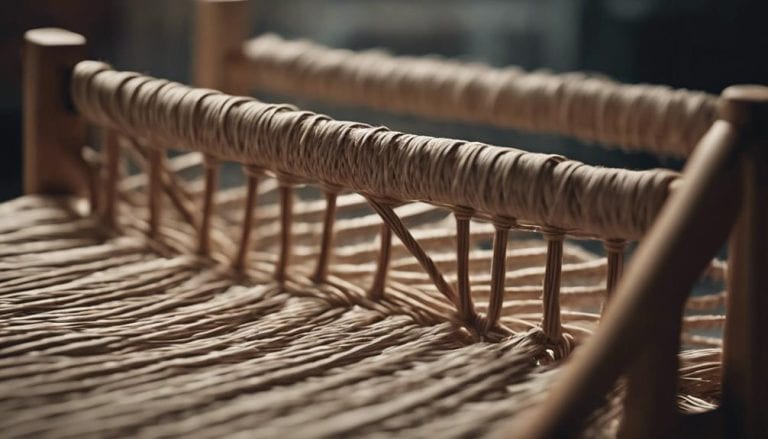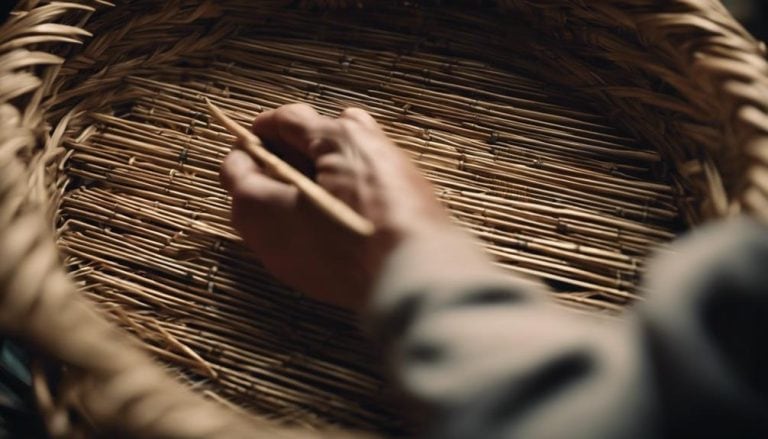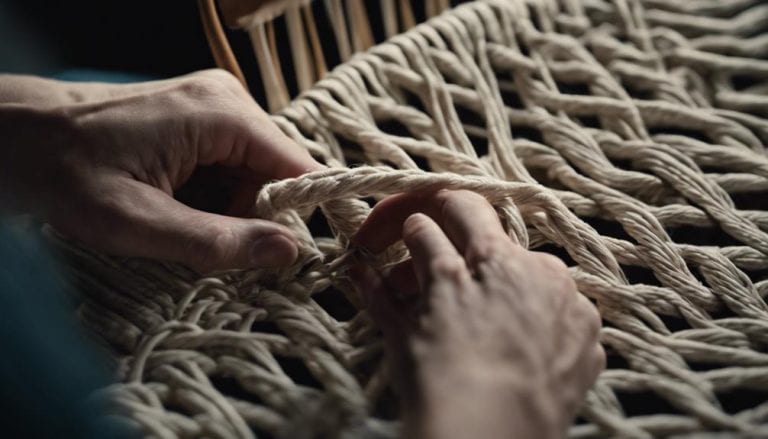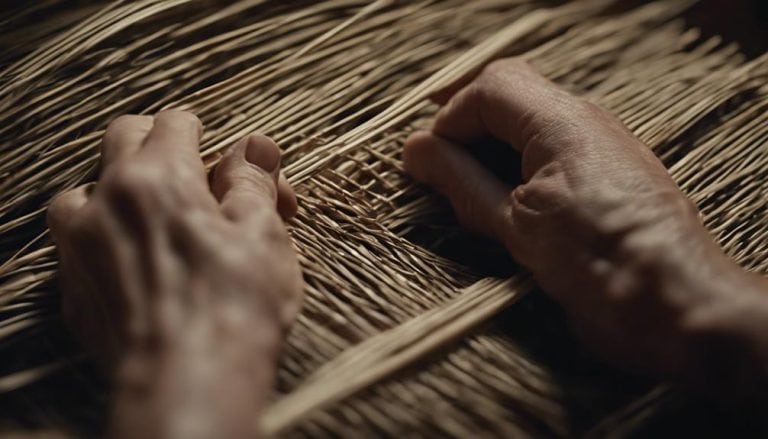How to Pick Rush Reeds for Crafting
Walking through a field of rush reeds is like searching for hidden treasures in a vast sea of green. As I carefully select each reed, I feel the weight of my decision.
The process of picking the right rush reeds for crafting is an art in itself, requiring attention to detail and a keen eye for quality. But how do you know if you've found the perfect reed to transform into a beautiful creation?
Let's explore the key factors that determine the ideal rush reed for your crafting endeavors.
Key Takeaways
- Choose long, straight reeds without bends for quality.
- Assess thickness and flexibility for optimal crafting.
- Select reeds at least 3-4mm wide for sturdiness.
- Avoid imperfections like mold and insect damage.
Identifying Quality Rush Reeds
When selecting rush reeds for crafting, it's crucial to carefully inspect for key indicators of quality and freshness.
In the realm of crafting, the hunt for the perfect wild reed is a pursuit of excellence. The first aspect to scrutinize is the reed's form – seek out specimens that are long, straight, and devoid of any unsightly bends or kinks.
A uniform thickness along the length of the wild reed is a telltale sign of superior quality, ensuring consistency in your final creation. Vibrant green hues are the mark of freshness, while any discoloration should be met with skepticism.
Cracks, splits, or indications of pest damage are unwelcome traits in a premium rush reed. A quality wild reed will exude firmness with a subtle flexibility, indicating its readiness for manipulation into your desired craft.
Mastering the art of identifying top-notch rush reeds sets the stage for a powerful crafting experience.
Assessing Strength and Flexibility
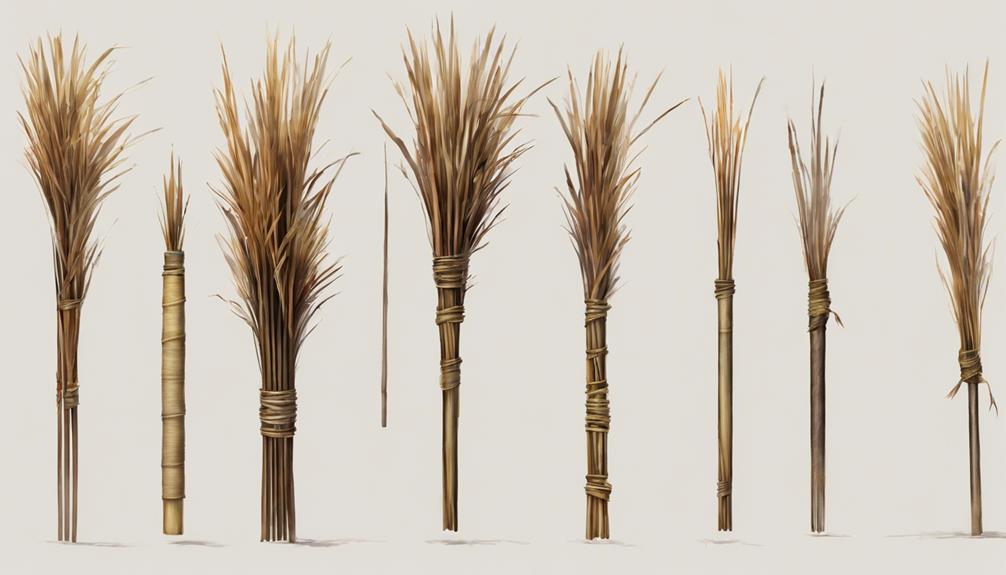
Assessing the strength and flexibility of rush reeds is essential for determining their suitability for crafting projects. To ensure quality results, I evaluate rush reeds based on their thickness and resilience. Rush reeds from the Typha latifolia plant that exhibit uniform thickness and minimal bending are likely to offer the durability required for crafting endeavors. I also test the flexibility of the rush reeds by gently bending them to gauge their pliability for weaving tasks. Optimal rush reeds will maintain their shape when bent, indicating their suitability for a variety of crafting projects. It is crucial to prioritize rush reeds that strike a balance between strength and flexibility, as this equilibrium is key to achieving successful outcomes in crafting. Below is a table summarizing the key points for assessing rush reeds:
| Assessment Criteria | Importance |
|---|---|
| Thickness | Ensures durability |
| Resilience | Strength indicator |
| Flexibility | Pliability for weaving |
Selecting the Right Size

To ensure the suitability of rush reeds for crafting projects, it's crucial to select the right size that meets specific diameter and length criteria. When choosing dried reeds for your crafting endeavors, keep the following points in mind:
- Diameter Matters: Opt for rush reeds that are at least 3-4mm in diameter. This thickness ensures sturdiness and durability in the final crafted piece.
- Length and Straightness: Select reeds that are long and straight. This makes handling and weaving easier, resulting in a more polished end product.
- Consistent Thickness: Look for rush reeds with a consistent thickness along their length. This uniformity ensures that your craft maintains a cohesive and professional appearance.
Inspecting for Imperfections
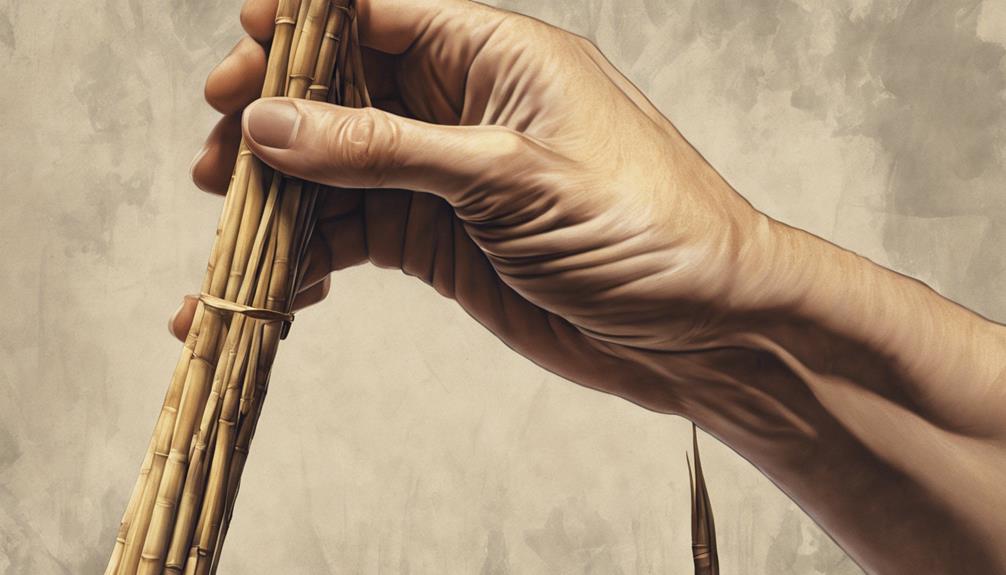
Inspect the rush reeds closely for any imperfections such as mold, mildew, discoloration, or signs of insect damage that could compromise their quality for crafting. When examining rush reeds, make sure to check for these imperfections to ensure the best materials for your crafting projects. Below is a table summarizing key imperfections to watch out for:
| Imperfections | Impact on Quality for Crafting |
|---|---|
| Mold or Mildew | Weakens reeds and affects durability |
| Discoloration | Indicates potential decay or rot |
| Insect Damage | Weakens reeds and causes structural issues |
| Holes | Compromise strength and flexibility |
| Dryness/Brittleness | Increases likelihood of breakage |
Testing Suitability for Crafting

When evaluating rush reeds for crafting, it's crucial to ensure they exhibit the necessary flexibility and consistency in thickness for optimal weaving results. To test their suitability, I gently bend each reed to assess its flexibility, aiming for a pliable texture that will weave smoothly. Additionally, inspecting the reed's thickness along its entire length is essential for achieving uniform weaving without interruptions.
Key Points:
- Flexibility: Bend the reed gently to ensure it's pliable enough for crafting.
- Consistent Thickness: Look for reeds with a uniform thickness along the entire length for seamless weaving.
- Aesthetics: Consider the color of the reed, opting for a natural hue without discoloration for enhanced visual appeal.
Frequently Asked Questions
How Do You Harvest Rushes for Weaving?
When harvesting rushes for weaving, I meticulously select stems between 30cm to 150cm in height, ensuring optimal quality. I handle them with care to prevent kinks or weakening. Learning these harvesting techniques is crucial for crafting success.
How Do You Harvest Reed?
When harvesting reeds, identify mature stands by height. Choose spots like bogs or wet woods. Handle with care to avoid damage. Dry the reeds before moistening to maintain strength. Following these steps ensures quality materials for crafting.
How Long to Soak Reeds for Basket Weaving?
To achieve optimal flexibility for basket weaving, I soak reeds in warm water for 5 to 10 minutes. It's crucial to maintain the right balance – pliable but not soggy. Fully submerged reeds ensure uniform moisture distribution.
How Do You Process Reeds for Weaving?
When preparing reeds for weaving, I gather fresh rush reeds, secure them with twine, and hang them in a dark, well-ventilated spot. Ensuring proper ventilation and avoiding direct light exposure prevents mold and discoloration, crucial for successful weaving techniques.
Conclusion
In conclusion, picking perfect rush reeds for crafting is a precise process that requires patience and attention to detail. By identifying quality reeds, assessing strength and flexibility, selecting the right size, inspecting for imperfections, and testing suitability, you can ensure your crafting projects turn out beautifully.
Remember, the key to successful rush reed crafting lies in careful selection and preparation. Get ready to weave wonders with your well-chosen rush reeds!


